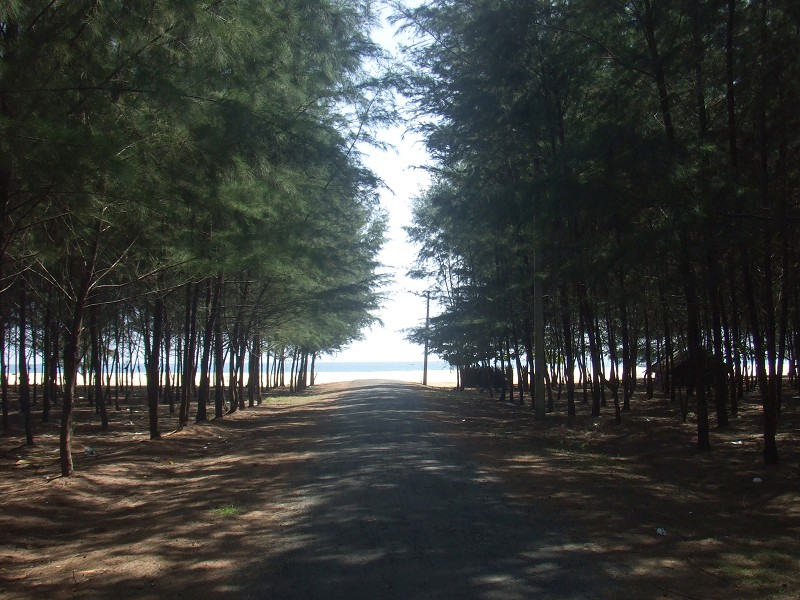Coastal Green Belt in Batticaloa: Is Casuarina A Success?

Coastal vegetations act as a barrier from soil erosion, salt spray, wind and provide protection from natural catastrophes as tsunami. Artificial coastal barriers are established for similar functions. This had tremendously increased following 2004 tsunami. Some plant species have been preferred for establishment of artificial coastal green belt. In Batticaloa, Casuarina has been a popular species for the green belt (more than 95%).
The overall extent of Casuarina plantation is about 400ha. About 100ha had been planted by Forest Department (FD) and about 300ha by “Mandru”. Majority of the plantation had been established between the year 2000 and 2005. About 52% (210 ha) of belt was established after the tsunami. About 40-50 km of Casuarina belt (about 70%) have been planted in the 65km of the coast line from Periyakallar to Kalkudah/Pasikudah, which accounts for 35-40% of the coastline of Batticaloa district. The green belt starts at 50-75m from mean high tide level and the width of the green belt exists between 75-100m. The belt is contiguous in some places and discrete in others. The distance between patches varies from 50-400m. A density of 1600 plants/ha has been maintained by FD and 3000 plants/ha by Mandru.
Field evaluation done in 2008 show only 50-60% of Casuarina has been succeeded. 40-50% shown poor growth or damaged/disturbed owing to many reasons such as illegal cutting (for firewood, beatle plantation, fencing, construction, security camps) and burning (about 100-200m belt was burned in two places), less awareness among local people, inadequate protection, management failures, financial problems, administrative failures and unreliable short-term benefits. These reasons made people who involved in establishment of belt, less interest to spend time and effort in future. However, the belt protects vegetable crops from salt spray and burning effect of leaves but performance of crops became less due to shadow effect, when the crops are planted close to the belt.
Green belt has other social aspects to consider beyond the protection such as inapt management caused poor access to and scenic view of the sea, sand mining and garbage dumping in certain places. It is also noted that thick Casuarina belt facilitates snake bites, sexual abuses, hiding place for thieves and drug users.
The belt is a monoculture and Casuarina does not permit ground growth, which is result in low biodiversity. It is a fire prone species too.
In assessing the success of plantation, positive and negative impacts need to be considered as
indicated above. This emphasis the need for a proper planning. The question remains “whether is it worthwhile to establish such a green belt focussing on a future, unpredictable natural catastrophes given the existing eco-social problems over a longer time frame?”
Information subtracted from: Mathiventhan, T. and Jayasingam, T. (2009). Coastal green belt in Batticaloa district: Is Casuarina a success? An abstract paper. International Forestry and Environment, Symposium 2009. Proceedings Part-1, Abstract of papers. p 7.

